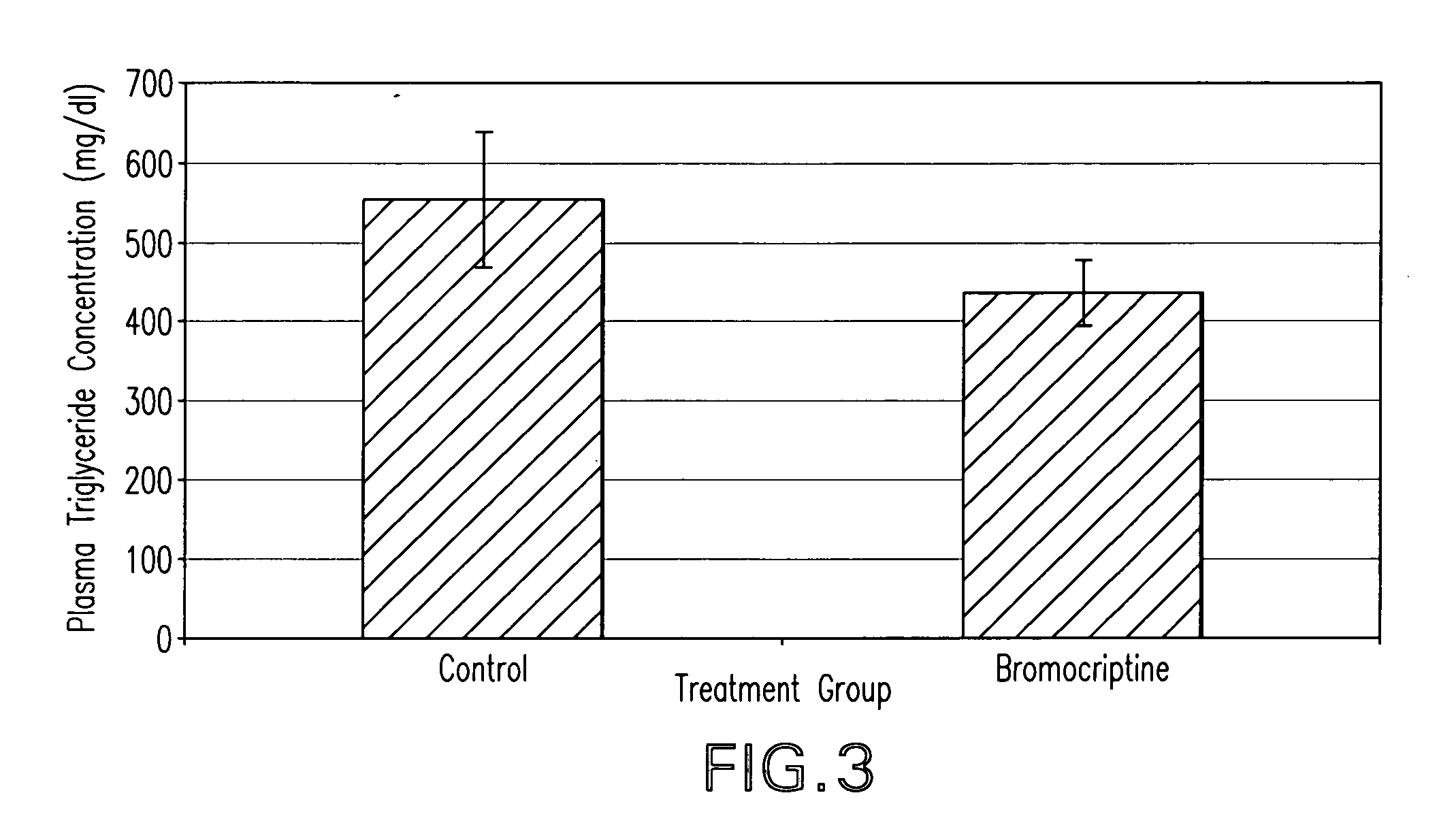Methods of treating metabolic syndrome using dopamine receptor agonists
a dopamine receptor and metabolic syndrome technology, applied in the field of metabolic syndrome treatment, can solve the problems of cvd, significantly increased risk of cardiovascular disease, and many body organs and systems affected by type 2 diabetes, and achieve the effects of reducing the risk of cardiovascular disease, and improving the multiple complex pathologies
- Summary
- Abstract
- Description
- Claims
- Application Information
AI Technical Summary
Benefits of technology
Problems solved by technology
Method used
Image
Examples
example 1
[0082]Four different groups of animals exhibiting the Metabolic Syndrome and / or Type 2 diabetes are treated with either saline as control, central dopamine neuronal activity activator(s), central noradrenergic neuronal activity inhibitor(s), or a molecular entity or entities that is / are both a central dopaminergic neuronal activity activator and central noradrenergic neuronal activity inhibitor, respectively.
[0083]Relative to the control group the dopaminergic neuronal activator / noradrenergic neuronal activity inhibitor group exhibits the greatest improvement in metabolism (decrease in obesity, dyslipidemia, hypertension, insulin resistance, hyperinsulinemia, and / or hyperglycemia) that is also significantly better than that of either the dopaminergic activator or noradrenergic inhibitor groups. An unexpected synergism between the dopaminergic neuronal activity stimulator(s) and noradrenergic neuronal activity inhibitors(s) is observed relative to the effects on improvement of the Me...
example 2
[0084]Two groups of animals exhibiting the Metabolic Syndrome are treated with either a dopamine agonist such as bromocriptine or vehicle (control) for a period of time of approximately two weeks. The insulin sensitivity, plasma triglyceride level, blood pressure, pro-coagluant and pro-inflammatory factor level(s) of the animals are then determined. Relative to the control group, the dopamine agonist treated animals exhibit lower plasma triglyceride level, pro-coagulant and pro-inflammatory factor(s) level, blood pressure, and insulin resistance.
example 3
Methods of Treating Vascular Related Disorders Using Dopamine Receptor Agonists
[0085]Background Daily administration of bromocriptine mesylate in animal models of metabolic syndrome improves insulin resistance, glucose intolerance, dyslipidemia, elevated blood pressure, pro-inflammatory status and hypercoaguability. Clinical studies have likewise demonstrated that Cycloset therapy improves glucose intolerance, insulin resistance, glycemic control and dyslipidemia in obese subjects with insulin resistance or type 2 diabetes. However, the impact, if any, of Cycloset therapy upon cardiovascular adverse event rate in subjects with type 2 diabetes has not been previously studied in a large population. The current trial therefore investigated the influence of Cycloset on cardiovascular event rate and all-cause serious adverse events among subjects with type 2 diabetes currently treated with diet, oral hypoglycemic agents, and / or insulin.
[0086]Methods This trial was a 52 week, double blind...
PUM
| Property | Measurement | Unit |
|---|---|---|
| weight | aaaaa | aaaaa |
| weight | aaaaa | aaaaa |
| time | aaaaa | aaaaa |
Abstract
Description
Claims
Application Information
 Login to View More
Login to View More - R&D
- Intellectual Property
- Life Sciences
- Materials
- Tech Scout
- Unparalleled Data Quality
- Higher Quality Content
- 60% Fewer Hallucinations
Browse by: Latest US Patents, China's latest patents, Technical Efficacy Thesaurus, Application Domain, Technology Topic, Popular Technical Reports.
© 2025 PatSnap. All rights reserved.Legal|Privacy policy|Modern Slavery Act Transparency Statement|Sitemap|About US| Contact US: help@patsnap.com



